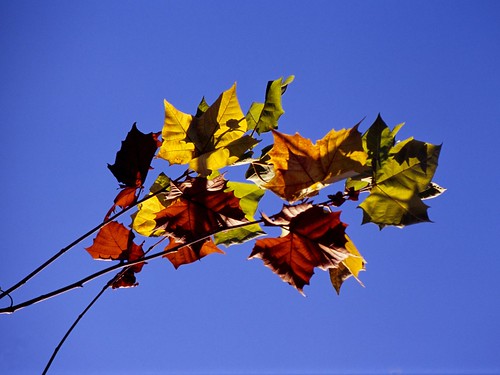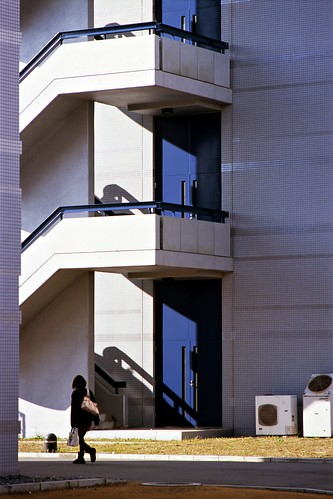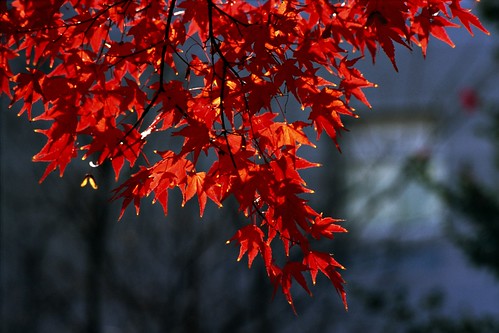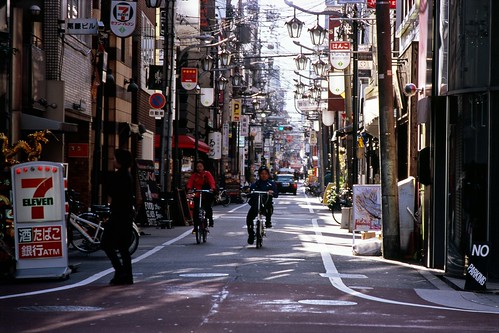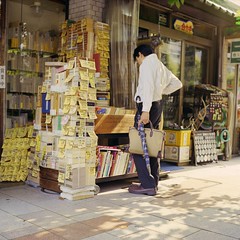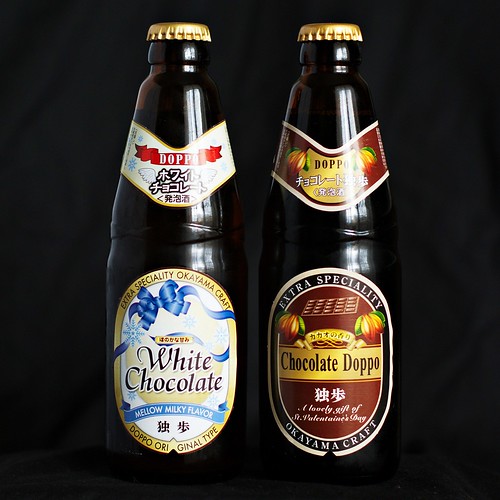Tim Bray suggests metered billing for mobile data is the way to go. Me, I think it is a terrible idea for psychological reasons, and it would be a serious threat to companies like Google that thrive on people freely using online resources. It'd push people to block ads, use local apps over on-line services and generally limit how much they do online.
For psychological reasons it's better to go with pre-paid data rather than metered, and to make sure that going over the limit does not incur extra, unexpected charges. Here is my Google+ post with much more detail: Metered Data and Prepaid Data
This leads to a separate question: What am I to do with posts like the one I have on Google+? On one hand, it's pretty long so it fits better here on the blog. On the other, the people that have circled me on Google+ are much more likely to be interested in this sort of thing than you here. It feels kind of wasteful to double-post the same text on both places.
For now I'll try doing thing like this: post longer bits either here or on Google+, then give a short summary and a link on the other place. If anyone have better suggestions I'm all ears.
Tuesday, March 27, 2012
Monday, March 26, 2012
ASSO
Went on a brief photo walk around Namba and Shinsaibashi yesterday. It's still chilly but the sunshine is warm and spring is in the air. I brought a film camera (my grandfathers SRT 101) so most pictures will wait for later, but I did snap one shot with my phone:
Sunday, March 25, 2012
Home Espresso
I know pod-based espresso machines are cheating; I should select, blend, roast, grind and tamp my coffee beans by hand, ideally using a tamper carved from century-old oak by a wizened tamp-carver deep in the Italian alps. It is not a substitute for a real espresso, drawn by a trained bartender.
But it is a lot better than no espresso at all, and as good in practice as the espresso in many chain stores. And I can get it at home, on a lazy Sunday morning, while wallowing in the Sunday newspaper. Remember, "perfect" is the enemy of "good enough".
But it is a lot better than no espresso at all, and as good in practice as the espresso in many chain stores. And I can get it at home, on a lazy Sunday morning, while wallowing in the Sunday newspaper. Remember, "perfect" is the enemy of "good enough".
Wednesday, March 14, 2012
Britannica Gives Up The Printed Encyclopedia
So, Encyclopedia Britannica sees the writing on the wall and stops publishing a printed version. I'm not surprised, and neither is, I suspect, anyone else. Searchable collections of facts is exactly the kind of thing that an online resource does very well and a paper version does badly.
The printed encyclopedia is limited by the practical size of the books, by the lack of portability, by the lousy search interface (good luck finding it if you don't know the name) and by the lack of updates. It is expensive, cumbersome to use, rarely there when you need it, and obsolete before it even leaves the printing press. There is no question that abandoning the printed version is the right decision.
A better question, I think, is if this kind of encyclopedia has any future, online or not. They are getting badly mauled by Wikipedia, true, but even more by the net at large. If you want to know about, say, the Minamata disaster then you're not going to Britannica.com. You search Wikipedia or simply google for it and check the promising links off the first couple of pages. If that happens to include a Britannica link then fine, but usually it does not.
People like to argue that a tightly curated resource like this is far better than, say Wikipedia — to say nothing of the net at large — but the truth is, the rate of errors is about the same. Wikipedia also tends to be far more comprehensive, both in breadth of subjects and depth of coverage, and with timely updates. And even Wikipedia pales compared to the resources of the whole net.
Yes, you do need to read Wikipedia critically, and the wide internet even more so. The world is full of pranksters, trolls and people with an axe to grind. But you need to read an encyclopedia with the same critical eye. You can't trust them blindly any more than you can trust any one resource. And no, you can't normally cite Wikipedia in a scholarly work, but then, neither can you cite Britannica.
The printed encyclopedia is limited by the practical size of the books, by the lack of portability, by the lousy search interface (good luck finding it if you don't know the name) and by the lack of updates. It is expensive, cumbersome to use, rarely there when you need it, and obsolete before it even leaves the printing press. There is no question that abandoning the printed version is the right decision.
A better question, I think, is if this kind of encyclopedia has any future, online or not. They are getting badly mauled by Wikipedia, true, but even more by the net at large. If you want to know about, say, the Minamata disaster then you're not going to Britannica.com. You search Wikipedia or simply google for it and check the promising links off the first couple of pages. If that happens to include a Britannica link then fine, but usually it does not.
People like to argue that a tightly curated resource like this is far better than, say Wikipedia — to say nothing of the net at large — but the truth is, the rate of errors is about the same. Wikipedia also tends to be far more comprehensive, both in breadth of subjects and depth of coverage, and with timely updates. And even Wikipedia pales compared to the resources of the whole net.
Yes, you do need to read Wikipedia critically, and the wide internet even more so. The world is full of pranksters, trolls and people with an axe to grind. But you need to read an encyclopedia with the same critical eye. You can't trust them blindly any more than you can trust any one resource. And no, you can't normally cite Wikipedia in a scholarly work, but then, neither can you cite Britannica.
Compare "Minamata disease" for Wikipedia and Britannica. Note the difference in the amount of detail they give you. Also note that Wikipedia has detailed references to external resources — scholarly works as well as general media, on-line and off — for the facts in the story, as well as extensive cross linking to related aspects of this item. If you want to learn about this disaster, there is no doubt which is the better starting point. And if Britannica has fewer errors here it is only because it has almost no information there to get wrong in the first place.
And if you leave the neat Wikipedia compound and venture out into the net at large, you'll find a huge trove of information. Tens of thousands of images, articles, film clips and eye-witness accounts; thousands of books and research papers about the medical, environmental, biological, chemistry, nursing, political, societal, cultural, legal, economic and mental health aspects of the disaster; and more opinionated writing about anything related to it than you can shake a very long stick at.
It is simply not possible for Britannica or any single resource to match this array of content. Wikipedia makes itself very useful by adding a large collection of links to other resources about every aspect of the story. But Britannica does not; its article just sits there, isolated and kept apart from the great, messy web of information surrounding it. It gives you no help in finding more and better resources, and thus gives you little reason to go there the first place.
I wonder how long Britannica can stay afloat on dwindling institutional subscriptions and advertising sales. I wonder if anyone will notice when they no longer do.
Monday, March 12, 2012
Now, what is this all about?!
Last week we had 16 degrees. Yesterday was mild enough that I took a walk without a coat in the spring sunshine. Today I pop out for lunch and it is snowing. In Osaka. In mid-March. It freaking never snows here this late; we're supposed to prepare for the cherry blossoms, not dodge wet, freezing snowflakes.
The deal is that we endure hideously hot, muggy summers in exchange for a mild winter. Who thought this was a good idea? I demand a refund. Or something.
Edit: half an hour later the sun is out, the pavement dries up and the temperature climbs into the two figures again. Not the most stable weather.
The deal is that we endure hideously hot, muggy summers in exchange for a mild winter. Who thought this was a good idea? I demand a refund. Or something.
Edit: half an hour later the sun is out, the pavement dries up and the temperature climbs into the two figures again. Not the most stable weather.
Thursday, March 8, 2012
Velvia
Velvia by Fuji Film is perhaps the single most famous family of modern slide films in existence1. It's actually a number of different films, but what they have in common is vivid (some would say garish) colour rendering that can really highlight nature scenes. That rendering does make it a less good choice for shooting people, though, as the bold colours that tend towards green can easily make your subjects resemble that of a seasick drunk. Which is not the impression you want to convey if you shoot, say, a wedding or a fashion show.
Slide films are a very small market even within the shrinking market for film in general. Some estimate that slide films are perhaps 5-6% of the entire film market and I have no trouble believing it. It's easy to see why: They're the most expensive films you can buy, and they tend to have short shelf-life. They have low latitude so you need to meter the light carefully or end up over- or underexposing them. They tend to have lower resolution than other film types. The large contrast means they're difficult to scan or print.
Modern negative films are really as good or better in every way, except that a properly treated slide film will give you an exact, repeatable colour rendering every time, and you can see the image right there on the negative. That is the reason magazines and other print have preferred slide film over other media.
But now, of course, digital cameras do it just as well — they have many of the same characteristics, with repeatable colour and high contrast — so the market for slide film, never big, has dropped off a cliff. The movie industry — the part that still haven't switched to digital — uses negative colour film, as do most hobbyists. It is cheaper, has much better latitude and tends to have better resolution. If you are going to scan the film, it's easy to adjust the final colour to your liking today, removing most of the advantage of slides. Kodak recently discontinued its last slide films, leaving Fuji as the sole manufacturer.
With that said, a slide image on a light table (or projected) is a beautiful sight to behold. There is something viscerally satisfying about the almost glowing colors that render even a mundane scene otherworldly beautiful. That glow does not quite translate into the scan or print, unfortunately, but it does give you something to aim for. And shooting slide film is fun if nothing else.
Velvia is really made for nature photography. It pushes muted colours, greens especially, to make them clearer and more vivid. Drab leaves brighten up. Flat, rainy scenes glitter and sparkle. Autumn reds and yellows will pop. Of course, human skin will also "pop" and become ruddy and saturated, and any green tones will get exaggerated. It may give you a healthy outdoorsy look in some people, but make others look like they are drunk or suffer from high blood pressure. Man-made, colourful structures will tend to become overly garish.
For these reasons, Velvia has been considered a bad choice for portraits and street photography. I agree that you want something subtler for portraits, but I think it makes a fine film for street and urban photography. With digital photography, and with "HDR photography" especially, the goal posts have moved. With it-hurts-so-bad-I-must-claw-my-eyes-out hypersaturated images everywhere today, Velvia doesn't seem all that bold or saturated by comparison.
--
Slide films are a very small market even within the shrinking market for film in general. Some estimate that slide films are perhaps 5-6% of the entire film market and I have no trouble believing it. It's easy to see why: They're the most expensive films you can buy, and they tend to have short shelf-life. They have low latitude so you need to meter the light carefully or end up over- or underexposing them. They tend to have lower resolution than other film types. The large contrast means they're difficult to scan or print.
Modern negative films are really as good or better in every way, except that a properly treated slide film will give you an exact, repeatable colour rendering every time, and you can see the image right there on the negative. That is the reason magazines and other print have preferred slide film over other media.
But now, of course, digital cameras do it just as well — they have many of the same characteristics, with repeatable colour and high contrast — so the market for slide film, never big, has dropped off a cliff. The movie industry — the part that still haven't switched to digital — uses negative colour film, as do most hobbyists. It is cheaper, has much better latitude and tends to have better resolution. If you are going to scan the film, it's easy to adjust the final colour to your liking today, removing most of the advantage of slides. Kodak recently discontinued its last slide films, leaving Fuji as the sole manufacturer.
With that said, a slide image on a light table (or projected) is a beautiful sight to behold. There is something viscerally satisfying about the almost glowing colors that render even a mundane scene otherworldly beautiful. That glow does not quite translate into the scan or print, unfortunately, but it does give you something to aim for. And shooting slide film is fun if nothing else.
Velvia is really made for nature photography. It pushes muted colours, greens especially, to make them clearer and more vivid. Drab leaves brighten up. Flat, rainy scenes glitter and sparkle. Autumn reds and yellows will pop. Of course, human skin will also "pop" and become ruddy and saturated, and any green tones will get exaggerated. It may give you a healthy outdoorsy look in some people, but make others look like they are drunk or suffer from high blood pressure. Man-made, colourful structures will tend to become overly garish.
For these reasons, Velvia has been considered a bad choice for portraits and street photography. I agree that you want something subtler for portraits, but I think it makes a fine film for street and urban photography. With digital photography, and with "HDR photography" especially, the goal posts have moved. With it-hurts-so-bad-I-must-claw-my-eyes-out hypersaturated images everywhere today, Velvia doesn't seem all that bold or saturated by comparison.
Shinsaibashi, Osaka. Note how the high contrast is a draback in this case; the film could barely capture both the sunlit and shaded areas at once.
--
#1 Kodachrome, discounted a couple of years ago, is far more iconic but it was not a modern film by any means, and did not use the same chemistry as today's slide films.
Monday, March 5, 2012
Don't Buy From Amazon (Before you Browse Around)
I've come to realize, recently, that Amazon is not always the best place to buy books. Not because I've had any problem dealing with Amazon and not because I'm concerned about their business practices (though there may be reason to be), but simply because they often don't give you the best deal on the books they sell.
A few months ago I bought "A Practitioner's Guide to GNU Autoconf, Automake, and Libtool", which, by the way, is an excellent primer on the very underrated Autotools — if you know what Autotools is, you need this book. I bought it from Amazon as usual, but discovered later that if I had bought it directly from the publisher, I could have received the ebook along with the physical book for just a little more money than the physical book alone. An searchable ebook version would be very useful for a reference work like this. In fact, No Starch Press (linked above) seems to give you that deal for every book they publish.
And last month I bought "Liars and Outliers" by Bruce Schneier as an Amazon ebook (it's a good read so far). Ebooks from Amazon are locked; you can't copy the book or make backups, and you can only read them using Amazons own Kindle software. Amazon have on occasion removed access to books from people who have paid for them. You don't really own the book when you "buy" from Amazon in other words, and I don't get important books as ebooks from them as a result. This book is the kind you only read once, though, so it didn't really matter to me.
A few months ago I bought "A Practitioner's Guide to GNU Autoconf, Automake, and Libtool", which, by the way, is an excellent primer on the very underrated Autotools — if you know what Autotools is, you need this book. I bought it from Amazon as usual, but discovered later that if I had bought it directly from the publisher, I could have received the ebook along with the physical book for just a little more money than the physical book alone. An searchable ebook version would be very useful for a reference work like this. In fact, No Starch Press (linked above) seems to give you that deal for every book they publish.
And last month I bought "Liars and Outliers" by Bruce Schneier as an Amazon ebook (it's a good read so far). Ebooks from Amazon are locked; you can't copy the book or make backups, and you can only read them using Amazons own Kindle software. Amazon have on occasion removed access to books from people who have paid for them. You don't really own the book when you "buy" from Amazon in other words, and I don't get important books as ebooks from them as a result. This book is the kind you only read once, though, so it didn't really matter to me.
But again, soon after getting the ebook I discover that I should have looked elsewhere first. O'Reilly (see the link above) offers the book for about the same price and completely unlocked. Had I bought it there I would now own it outright, not just rent it from Amazon, and I'd be able to use my favourite ebook reader, not the one Amazon forces me to use. And O'Reilly also gives you a deal like the No Starch Press above for many of their books, with a paper book and ebook combination for much less than buying each separately.
The take-home message? Browse on Amazon by all means — their site is great for finding things and checking reviews — but don't blindly click that "Buy" button until you have looked around a bit:
- Check the other major online stores, both the big international ones like Barnes and Noble and the local stores in your country. When you add postage, exchange rates and payment fees it may well be cheaper to buy elsewhere.
- Check the publishers' own websites. The price may not be lower, but the product you get — book and ebook together; unlocked ebook; choice of formats; buy three books and get one free — may be vastly better than what you get from Amazon.
- For recently published books, take a look at the authors own website (yes, they all have one nowadays). They will have links to all the places you can buy their books. They may also have links to all special deals, and they may offer an extra discount through their site as well.
Amazon may have been the best book deal around when they started. But the publishers and other stores have caught up and sometimes surpass them today. Don't be lazy; it's worth looking around.
Thursday, March 1, 2012
Chocolate Beer
Valentine's day came and went last month. As I've mentioned many times, in Japan women give chocolates to men on Valentine's, and the men reciprocate on "White Day" a month later. There was no way for Ritsuko to top last years amazing success, so she kept it simple this year, with a duo of chocolate-flavoured beers from a local brewery in Okayama. They are both very good as beers, and do not come across as a ploy or a stunt at all.
The dark beer is great. It has a clear, strong cacao flavour with a pleasing bitterness that meshes well with the burnt-sugar tones of the beer itself. It's not sweet or cloying at all, but just brings a very filling, mature taste. People sometimes describe stouts as having a chocolate tone, and this beer plays up that flavour with a well-balanced dose of the real thing. This beer I would be happy to drink on a regular basis if I could.
The light beer is a nice full-bodied beer with a bit of cacao butter for flavouring. The effect is rather like that of a weissbier but with less acidity and a more even, milky tone. It's a good beer but the chocolate flavour is muted enough that it would be easy to miss unless you knew to look for it. It's a pleasant and flavourful beer but not as distinctive as the dark one, perhaps.
The dark beer is great. It has a clear, strong cacao flavour with a pleasing bitterness that meshes well with the burnt-sugar tones of the beer itself. It's not sweet or cloying at all, but just brings a very filling, mature taste. People sometimes describe stouts as having a chocolate tone, and this beer plays up that flavour with a well-balanced dose of the real thing. This beer I would be happy to drink on a regular basis if I could.
The light beer is a nice full-bodied beer with a bit of cacao butter for flavouring. The effect is rather like that of a weissbier but with less acidity and a more even, milky tone. It's a good beer but the chocolate flavour is muted enough that it would be easy to miss unless you knew to look for it. It's a pleasant and flavourful beer but not as distinctive as the dark one, perhaps.
Subscribe to:
Posts (Atom)



